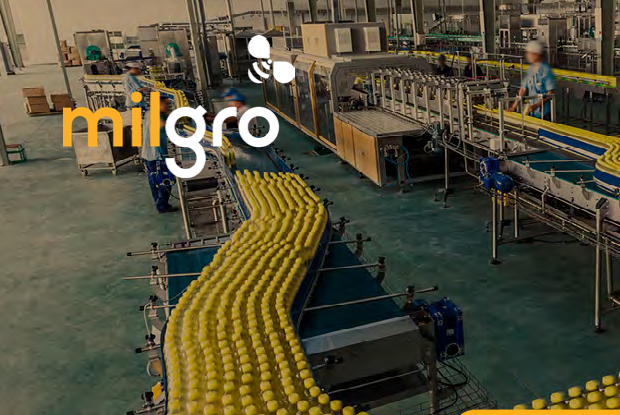Milgro whitepaper- ‘Towards a circular food sector’
May 23, 2023
The food sector faces enormous challenges. The world population continues to grow, and the number of people structurally short of food is also increasing after years of decline. Simultaneously, society is facing a rise in food-related diseases of affluence. The industry as a whole also has a huge negative impact on the environment.
Milgro recently released a whitepaper entitled ‘Towards a circular food sector,’ which identifies current trends and developments in the food sector as this moves towards a more circular future. These trends include regenerative agriculture and horticulture, local production, shorter supply chains, sustainable packaging, and stricter laws and regulations.

"The food sector has a critical role to play in building a more sustainable and resilient future. This whitepaper outlines some of the key challenges facing the sector, as well as practical solutions that can help businesses move towards a more sustainable future"
Alex van Kuilenburg, Business Development Manager Food at Milgro
Towards a resilient and circular food sector
Milgro is a company specialising in sustainability solutions for businesses, whose mission is making the world waste-free by 2040. Their latest white-paper ‘Towards a circular food sector’ outlines the importance of more circular practices in the food sector.
What is the impact of the food sector today? The report presents some compelling figures. One-third of greenhouse gas emissions come from producing, packaging, transporting and processing food and food waste. The latter also costs the global economy 4.4 billion euros a year, while thousands around the world are starving. This is socially unacceptable other than environmentally unsustainable.
There is an urgent need for all value chain actors to both address these significant shortcomings in their operations, ensuring resilience and fostering innovation. At the same time, the sector needs to face the external pressures coming from a changing climate, loss of biodiversity, and water scarcity to name a few.
Circularity provides a number of solutions, some of which already being adopted around the world. However, implementation needs to be accelerated to make sure we meet the increasing demands of a growing population. Sustainable practices such as the development of short supply chains, the transition to more environmentally-friendly diets, business models championing resource efficiency and sustainable packaging are only some of the solutions that can to be deployed. Finally, the report emphasises the need for stakeholder engagement and collaboration to successfully speed up the transition.
Here some key takeaways from Milgro’s report:
- The food sector is both contributing to and suffering from the environmental problems caused by global supply chains, food waste, declining biodiversity, intensive agricultural practices, and more.
- The adoption of circular economy principles – alongside the development of shorter supply chains, the uptake of meat-free diets and alternate proteins, or the implementation of regenerative agriculture amongst others – all have the potential to successfully address these challenges.
- Technology and digitalisation can significantly contribute to speeding up the transition through continuous research and innovation.
- Collaboration across the food value chain, as well as with governments, NGOs, and local communities, is crucial to addressing these challenges.
- Businesses and food companies big and small have a critical role to play in building a more sustainable and resilient future. Targeted incentives and legislations both are needed to enable them to move forward, faster.
- The many advantages of a circular food sector are evident. But only when circular practices become more profitable for producers than traditional ones will we be able to accelerate the transition. The true cost of the current ‘business-as-usual’ is indeed not yet reflected in our food prices.
